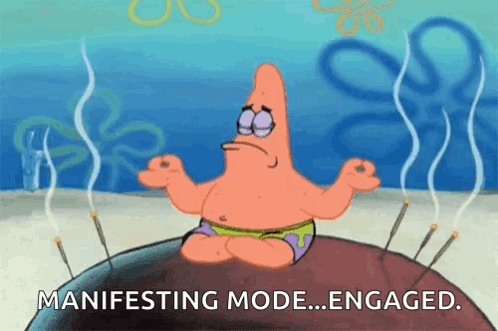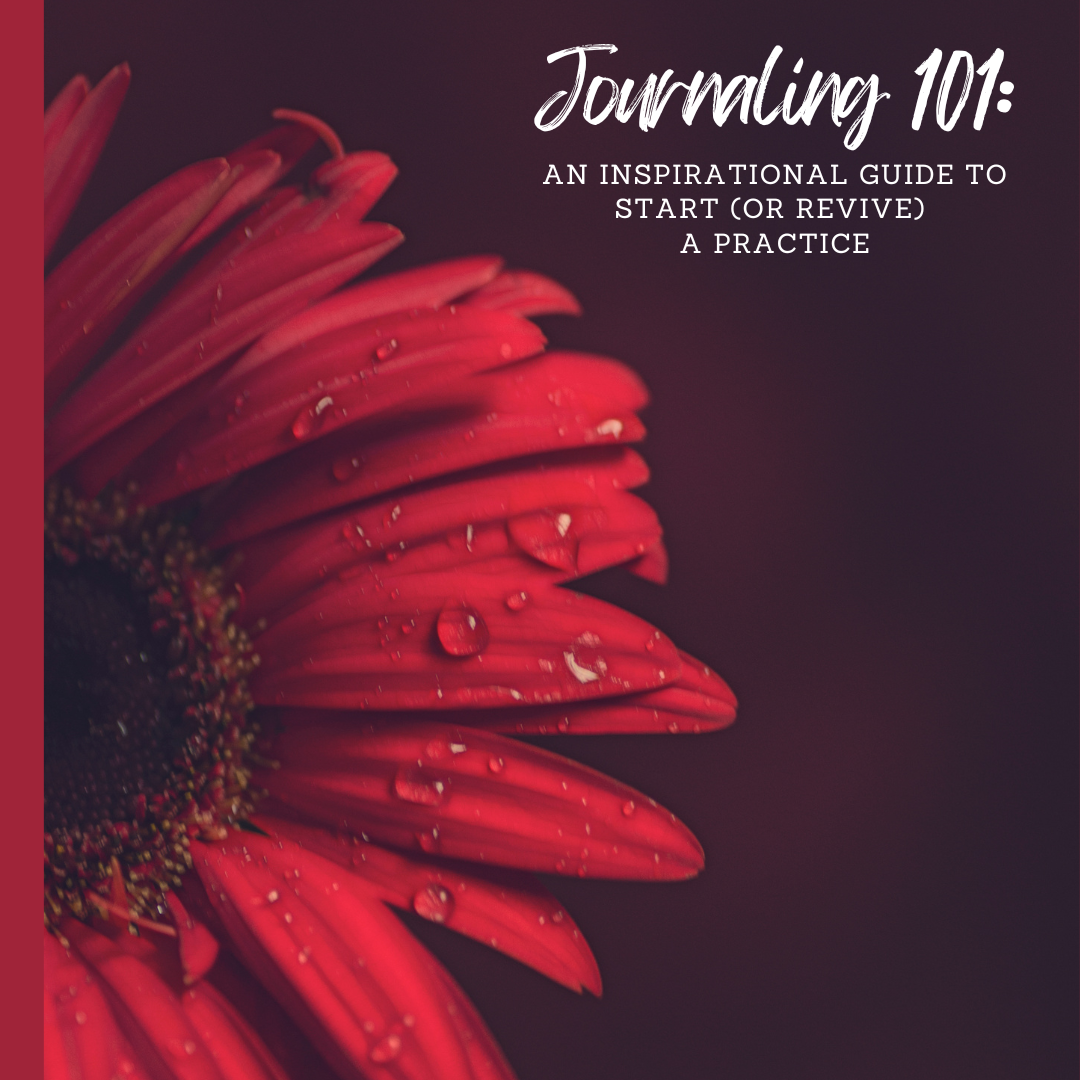Listen to Let the Verse Flow on Your Podcast Player of Choice
This is a transcript from episode #33 of the Let the Verse Flow Podcast.
Deep listening, and attuning to our inner self can connect us to our intentions and the personal growth goals and insights that help us find purpose and meaning. We shut off all the demands of the outside world and turn inward to contemplate the messages, feelings, and intuition that come from self. Perhaps like me, you may have silenced these messages by being overly concerned by other’s opinions, running yourself ragged to please assorted bosses, family members, or long to-do lists. Listening to our inner world is a practice that needs time and space. The reward for spending time in personal reflection is how this self-knowledge helps us set well-formed intentions for areas in our lives that need to grow and change.
It Started with a Debate on Manifestation
The older I get, the more I love my ever-evolving concept of personal growth. Self-care can get a bum rap when it’s reduced to memes, one-liners, and pseudo-science. But at its core, your personal growth journey is related to several interconnected factors. Things like goal setting and intentions. I’ve talked about these ideas many times on the podcast, but I was listening to another podcast recently, the Being Well Podcast, and the hosts, Drs. Rick Hanson and Forrest Hanson, a father/son duo, discussed the Psychology of Manifesting.

As doctors, they are skeptical of how popular manifestation trends like the Law of Attraction move people away from the psychological truth of using your mind to help you achieve your goals by moving them into the metaphysical or transcendental realm where they argue your thinking is less grounded in goal setting or practical action. As usual, my beliefs fall somewhere in between the Law of Attraction philosophy (as I understand it), and the doctor’s clinical connections between the cause and effect of setting clear intentions and working to make them happen.
I was a bit uncomfortable about these choices, and realized as I often do now that I’m getting a bit older, that I don’t have to choose. I can take a nuanced path, so I’d like to discuss what the Hansons said and then discuss my spin on how this helps us move toward our goals. Since I know way more about topics like positive psychology and habit formation than I do about manifestation, I have a bias. We all do, but I do think that we can benefit from taking the Hanson’s approach to move forward, with a few caveats.

Good Goals Begin with Intention-Setting
I believe in the vast possibility of goal setting and intention and have seen goals come to fruition as a result of what I believe to be direct, repeatable action on my part. I like to think that I play a major role in directing my goals, but I must make note that sometimes even with all that work, I don’t get what I want. There are some intangibles here, there are some obstacles to achieving some of my goals, and I don’t think any amount of intention setting, work, or visualization will make those things happen. Perhaps my lack of belief plays a role in whether they come to pass. That’s an interesting thought. If I visualized more, and took more action, could I achieve all my goals, or are some goals not achievable and directed by forces outside my control? I believe there is a line between what I can influence through intention, action, and visualization, and what I can’t. After all, I don’t control all aspects of my life, but I do impact it, I do have the agency to affect it, and that’s what I’m interested in as I continue to take this personal growth journey. I want to learn and grow and take in new ideas, like the ones the Hansons presented.
I have more questions than answers, but I do have a path forward, so please bear with me on this. I’d love to get your perspective on this too, so after you listen to this episode, please send me an email with your thoughts. You can email me at jill@letheverseflow.com and let me know where you land on this manifestation question (and the reason why some goals don’t come true despite dedicated effort).
Good Goals Backed by Dedicated Action
What got my attention during this episode of Being Well was when the Hansons started talking about the psychologically rooted process of manifesting the things you want; they mentioned these factors: first, a belief in yourself that you can make a goal happen, that you can accomplish it and that you have enough ability; second, being very clear about the goal you want to achieve to visualize it and work more methodically to make it happen. They talked about how people sometimes struggle to get clear about what they really want, but you need to be so honed in on your goal that you can visualize the steps needed to achieve it. That specificity in your visualization is a lot easier to do if you can name your goal clearly. The third component they named was dedicated effort, that’s how you take action to systematically work toward your goal.
To review, those three components were:
- believing in your ability to achieve your goals,
- setting clear goals that can be visualized, and
- taking consistent action to achieve those goals.
It sounds like much of what I talk about with you. Hold this framework in your mind for a bit, there are a few more components they listed as also important for cultivating a mindset that supports the goal-setting and action-taking you will do.
They mentioned psychological flexibility, rational optimism, and a growth mindset. Skills that allow you to see missteps as opportunities for growth instead of viewing them as major obstacles. The Hansons go on to compare this psychologically based, action approach with the less structured (and what they categorized as a "supernatural" or “transcendental” version of manifesting) that uses wishful thinking but largely skips over the hard work of the dedicated action. I think it’s more complicated than that, and they acknowledged that, but as someone who has recently begun to embrace some of these transcendental beliefs through my meditation practice, I think the power of using a variety of tools (that include mindfulness, visualization, and perhaps affirmations) serve to augment action and direct it both psychologically and spiritually.
Thoughts Can Help Us Manifest When They Spark Action
As I understand it, it’s in the action stage that both your thinking and the things you do (your actions) get converted into neural pathways that support your goals; you change thinking into tangible things through the repetitive thoughts (and actions) you have while working toward your goals. You could argue that many people who do believe in manifestation do take consistent action, but there are certainly folks who lean on visualization and affirmation more than action. I think the real magic is in the combination, and it’s not magic, it’s hard work. That is using visualization, affirmation, and action to work toward a precise goal that you believe is possible because it’s in the realm of possibility.
What interested me about this conversation wasn’t the manifestation debate, it’s this framework that the Hansons talked about, a framework that I had internalized over many years of traveling along my own personal growth journey. In case you haven’t guessed by now, my middle name is "intention." It’s Jill Intention Hodge. The reason I like the word intention, and am always talking about intention building on the show is because it brings in clarity at the onset of your personal growth goal setting, and I think clarity is vital to being successful.
You can only build a strong intention to achieve a goal if you have self-belief (you think you can achieve it) and you have clarity about what the goal is and what it will take. Once you have those two components, you are on your way to setting a strong intention for making things happen. The consistent action (which we may try to get around) is the vital third element, and once you recognize how much work will go into achieving your personal growth goals, you realize why the first and second elements of the framework are so vital.

You are not going to take consistent action unless you are 100% invested in your goal (and think you can achieve it). Let’s break this down with an example. I’ll pick a personal growth goal that I’m currently working on, and walk us through the steps of realizing it.
A Goal-Setting Example: Setting Boundaries to Reduce Overthinking
One of my personal growth goals is to not get emotionally wound up or involved in petty, irritating, and meaningless trivialities that arise in my day-to-day life. With so much caregiving responsibility, and as a function of getting older I think, I don’t have the time or the patience to get into it with people these days. Whether it’s a miffed co-worker, a rude commuter, or a poorly run business, my goal is to be as clear as possible about my boundaries, to advocate for myself when needed, and to then let rumination or attachment about these little interactions go at the end of the day and release the stress of thinking about these interactions.
For me, having an easy and calm mindset is vital to living my life the way I want to, especially as I get older and realize the ramifications of triviality in light of my mortality. Frankly, I don’t have time to f**k around. I need to enjoy my life and the years I have left. I need to come home and have some peace.
As an example, I’d been having some billing problems for some of my mom’s care. There was a small discrepancy in billing and I thought I had fixed it and that the business would issue a credit, but the next month they overcharged me again instead of using the credit on the account. It wasn’t a great sum of money, but it was the principle to me (and the lack of attention that the business gave to fixing their error after more than a few emails and coaxing on my part to initially rectify the situation). Instead of stewing about it, or sending a bunch more emails, or making multiple calls to get it fixed, I sent one last email that said, “I won’t do business with you anymore, you wasted my time for the last time, and don’t send me any more incorrect bills because I won’t be paying for services we didn’t receive.” I handled things and the overthinking started to dissipate.
It took some days to get a response, but I had resolved it for myself, and what I’ve focused on since that experience is the way I set a boundary. I advocated for myself and my mom and resolved the issue on my end by terminating the service. If it were an essential service, I would have to spend time sourcing an alternative, but since it isn’t, I don’t have that step. The important thing is that I understand how this situation relates to my goal of not getting worked up and entangled in relatively insignificant inconveniences (that can bug me a lot). I’ve learned that I have to set boundaries and take action to resolve these little annoyances, but also that I’m growing with each one into a person that I respect. A person who takes action to achieve what they want, and to protect their piece of mind.

Stopping Myself From Going Down the Rabbit Hole
This also works for bigger problems, like when a boss or co-worker wants to entangle you in some nonsense that frankly is beneath you and only serves to pull you down. These are so much trickier, but they require the same three steps, that you believe you can set boundaries, that you set goals (and an intention) to actively remove yourself from petty or insignificant problems, and that you take action to fulfill that intention.
I used to get very worked up when a boss or colleague wasn’t happy with my work or treated me in a way that I didn’t like (or think I deserved). But once my mother got sick and I realized what really big problems were like, I told myself that I didn’t have time for these small annoyances. I told myself that sometimes people act in a way that is rude or narcissistic because of their own problems and that I wanted no part of that. I would make sure that they kept their problems instead of spreading them to me.
So, I intend to get my work done and collaborate as best I can with co-workers, but understand that I have boundaries that mean that if the interaction breaks down into some petty or silly sh*t, I’m not going along for the ride. I will set my boundaries and move on with my work. This has helped me let co-workers know when they have overstepped, it’s helped me set limits with people and gain support from co-workers who value my contribution.

Check out this episode on overthinking.
My personal goals often involve reducing overthinking and worry because I can spend an inordinate amount of time fretting if I don’t have a plan in place to address these issues. See episode #23 on overcoming overthinking (and episode #24 an affirmation meditation to quell overthinking). Am I always successful? Hell no, but I work toward my clear goal of boundary setting and take consistent action to notice when I’m in a troublesome situation; I try to correct my behavior or call out someone else’s when I need to. If I do that, I don’t have to stew about things. I can let the problems go more easily.
Intuition: Inner Listening on Steroids
So, now that we have this three-part framework in place (and my thanks to the Hansons for helping me connect these dots), let’s get back to that internal listening I was talking about. How does listening to yourself play into this? Many people have talked about inner listening and the way it shows up as intuition. Intuition is listening to your feelings, not necessarily the facts, to help you know something. It’s a way of knowing that isn’t about collecting data but instead relies on tuning in to your feelings.
As Rumi said, “There is a voice that doesn’t use words. Listen.” When we listen to ourselves, we can tap into a powerful sense of knowing that can be a solid foundation for uncovering our true feelings about non-negotiables in our lives.
Ask Yourself these Questions
Since my mother’s illness, I think about my mortality much more than I used to, and I don’t want to waste my time and my life carrying around little annoyances and frets with me. Thus, I created a personal growth goal to help me set boundaries and maintain a mindset that handles them as they come along. To establish this goal, I tuned into myself, asking myself questions like:
How do I want to interact with people in the second half of my life?
Where do I want to put my energy these days?
How can I walk away from annoyances that shatter my inner peace but are of little consequence in the end?
I did some deep listening, and journaling about this topic and came up with this phrase that helps me reset my mind when it has gone astray down some rabbit hole, especially if it’s a problem caused by someone else’s mistakes.
The phrase is “That’s on you, not me.” I say it to myself when someone is spiraling out of control around me, when someone is trying to transfer their angst onto me, or when they are acting out and trying to entangle me in it. My phrase “That’s on you, not me” helps me let the problem roll off my shoulders. It permits me to reframe the situation and take a few breaths to recenter. Whatever they said or did was about their mental state or problem, and not mine. I don’t want to internalize it, take it to heart, fret over it, or even carry it home at the end of the day.

Here’s a poem about my views on developing these deep listening skills to help determine and create goals that matter. This poem is called Dear One.
Dear One
By Jill Hodge
I’ve heard you, dear one, tell me you can’t howl at the moon
It’s not your style to bear your teeth
when forced off ledges atop slick mountain peaks
Teetering at the edge
I’ve heard you, dear one, tell me you don’t want to listen
To loudmouths drunk on their own words
That should be in detox instead of out in the world
Teetering at the edge
I’ve heard you, dear one, tell me that you want thoughts to stop
To be left along some lonely highway like tumbleweeds
That blow in the breeze and like dust, just go away
Blowing in the breeze
I’ve heard that you want to be dear to yourself
I’ve heard that you want to make time
For times that matter and dreams that grow
Oh, dearness isn’t far behind
Blowing in the breeze
Before you can know dearness, you must know what’s dear to you
Let feelings arise, let knowing grow, a wellspring shines
Listen to what can’t be named,
but sow the seeds for knowing all the same
Wake up the inner voice from its long winsome rest
And ask it this question “What do you want my dear one,
From life and love and trying your best?
If you listen you will hear the call
like a soft newborn Robin nesting in your chest
Activities for Cultivating Deep Self-Listening
This deep listening can be helped in several ways. First, spend some time in stillness and quiet. Mindful walks, meditation, and restful sleep are your allies here. The mindful walks (especially during quiet mornings or after dinner) help your subconscious work as you absorb sensory information from the environment. When you do a mindful walk in nature, the trees, the grass, the rocks, and the streams excite your senses and awaken your inner thinking and feeling states subtly in ways that can come back to you later as new insights. I often have a rush of new ideas for poems or podcast topics during my morning walk to work. Sometimes I have to stop and add these thoughts to my phone notes app to save them so I can work on them later. On these walks, I source the imagery that I write about, things like cherry blossoms, mushrooms, scents, and lush green colors in the park. This imagery all comes from these walks.

Meditation is another excellent inner listening tool. While we aren’t listening to our thoughts during meditation (instead we are letting them arise and pass and not attaching to thoughts) this mental stillness helps clarify our feelings in subtle ways. I’m not sure how it works, but I find that making time for meditation and mental stillness helps me understand myself. I notice some time after my meditation, that I've been tensing my neck and then may see that tension come back during the day when I interact with someone or do something. I’m learning through stillness and the wisdom of my body.
My body has a subtle language that tells me things, adding to my growing understanding of who I think I am and what’s important to me. There is much knowledge in the body, and because the body is such an important channel of connection while meditating (especially the breath) it can tell us things if we listen. It can tell us things like the fact that my neck hurts from stressful tensing and I notice patterns about these pains.
I only learned recently through meditation that I clench my hands while I walk, during meetings, and throughout the day. I carry tension in my hands, so I’m trying to become more aware of it, and relax my hands (and keep them open). Meditation also centers you, which just means it brings your attention back to the body (and for me, the concept of my soul within that body). After a meditation sitting, I’ll think of my mother or daughter and feel a sense of gratitude that probably came to the surface because I was relaxed enough to let all the angst and fretting pass away.
Restful sleep is also essential for listening to yourself. After a good night’s sleep, I have important morning shower moments. While I’m taking my shower, I often resolve problems that I’ve been thinking about over the week. The restful sleep allows me to work through these problems and then the sensory stimulation from the shower helps release them. There’s no shortage of sleep aids, tools, and meditation techniques to tap into. You can use your journaling to help prepare for sleep. Here are some journal prompts for bedtime.
The final tip for deep listening is to journal. Having a central location, in any notebook or phone app you’d like, for your thoughts, feelings, musings, perhaps playful doodles, is a wonderful way to listen to yourself. Your words, drawings, notes, clippings – whatever you put in your journal – will lead you down a path to understanding what’s important to you. You will begin the process of clarifying your goals. If you can’t answer the question “What do I want in life?” journaling can help you begin to chip away at that big question. It’s a big question for sure, but writing will slowly show you what’s most important to you. You’ll write about it a lot, work out problems, and find your way to a goal that’s meaningful for you.
When you’ve done this deep listening, and hopefully developed a belief in your abilities as you process thoughts and ideas through journaling, you are ready to set an intention. A personal growth goal that has teeth and meaning and purpose – and one that you can work through with dedicated action.
Journal Prompts for Deep Inner Listening
Summertime is the perfect time to ease into journal writing, using just 5-10-minute sessions to unwind and let your words flow. Pull out a journal and write in response to these prompts as you start the journey of your summertime refresh:
As you write in response to these journal prompts, your goals will become more apparent. Pick one, clarify it, set an intention, and then work to make it happen. Manifesting something is an active state, not just a wish. We all have to do the work to grow, but hopefully, we grow in the direction of what’s most meaningful to us, towards goals with purpose. As you journey forward toward your purpose, I’m hoping that you stay on the bright side of the beat.🌞
Podcast Music: My thanks to all the musicians who make incredible music and have the courage to put it out into the world. All music for my podcast is sourced and licensed for use via Soundstripe.
Songs in this podcast episode: Rabbit by Midnight Daydream; Slide by GEMM; Rain On The Leaves by In This World; Pyaar Kee Seemaen by Cast of Characters
Resources:
Being Well Podcast (the Psychology of Manifesting)
Yoga Nidra 20-Minute Guided Meditation
How Journaling Can Help You Sleep
Related Episodes: Overcoming Overthinking and Worry with Journal Writing & Meditation (episode 23)
Affirmation Meditation: Overcome Overthinking and Worry (episode 24)
LTVF Season Two Music Playlist: Check out the songs that inspire me, and connect with artists from many genres who add to our collective, human soundtrack.
Listen to Let the Verse Flow on Your Podcast Player of Choice
Check out the resources on this website (and subscribe) to get podcast episodes, poems, articles, music playlists, and journal prompts delivered to your inbox.
Then, connect with me on Instagram. Let me know you hear me out there!
Journaling Resources

Sign up for the Let the Verse Flow Newsletter and get access to all my articles, including this free 30-Day Journal challenge (with starter writing prompts).

Sign up for the Let the Verse Flow Newsletter and get access to all my articles, including this free journaling guide.
Let the Verse Flow is a community-supported, independent publication launched in June 2023 by Jill Hodge. If you subscribe today, you'll get full access to the website and newsletters. Members are vital to building a rich community of diverse voices. Join us by subscribing today; consider a paid subscription to support the community if possible. Thank you!



